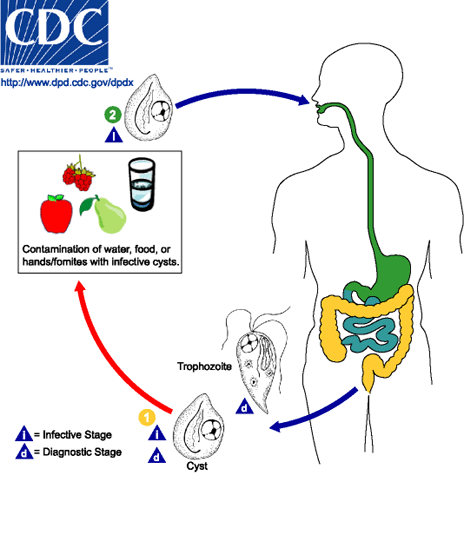Although much literature cites this parasite as a non-pathogen, there is much reason to believe that in some cases these "non-pathogenic" agents actually cause symptoms in patients, with no other infections or conditions that would explain their symptoms. Following is a list of a few references to support that statement: Cuffari C, Oligny L, Siedman EG, 1998 Dientamoeba fragilis masquerading as allergic colitis. J. Pediatr Gastroenterol Nutr 26: 16-20., Feigin, RD, Cherry, James, Demmler-Harrison, GJ, and Kaplan, SL. Feigin and Cherry's Textbook of Pediatric Infectious Diseases, 6th Edition; Ch. 223, Amin, OM, 2002. Seasonal Prevalence of Intestinal Parasites in the United States During 2000. Am J. Trop. Med. Hyg., 66(6), 799-803., Garcia LS, 2005. Diagnostic Medical Parasitology. Washington, DC: American Society for Microbiology. Pg. 9 and Corcoran G.D., O'Connell B., Gilleece A., Mulvihill T.E.: Entamoeba coli as possible cause of diarrhea. Lancet 1991; 338:254
Chilomastix mesnili, a nonpathogenic flagellate.

The cyst stage is resistant to environmental pressures and is responsible for transmission of Chilomastix. Both cysts and trophozoites can be found in the feces (diagnostic stages) . Infection occurs by the ingestion of cysts in contaminated water, food, or by the fecal-oral route (hands or fomites) . In the large (and possibly small) intestine, excystation releases trophozoites. Chilomastix resides in the cecum and/or colon; it is generally considered a commensal whose contribution to pathogenesis is uncertain. Animals may serve as a reservoir for Chilomastix.
Worldwide.
Chilomastix mesnili is considered nonpathogenic. The presence of cysts and/or trophozoites in stool specimens can however be an indicator of fecal contamination of a food or water source, and thus does not rule-out other parasitic infections.
Chilomastix mesnili is identified through the detection of cysts and/or trophozoites in stool specimens, both concentrated wet mounts and permanent stained smears (e.g., trichrome).
For more information view the source: Center for Disease Control
Recommended Test: Full GI Panel
Recommended Product: Freedom Cleanse Restore Parasite Cleanse